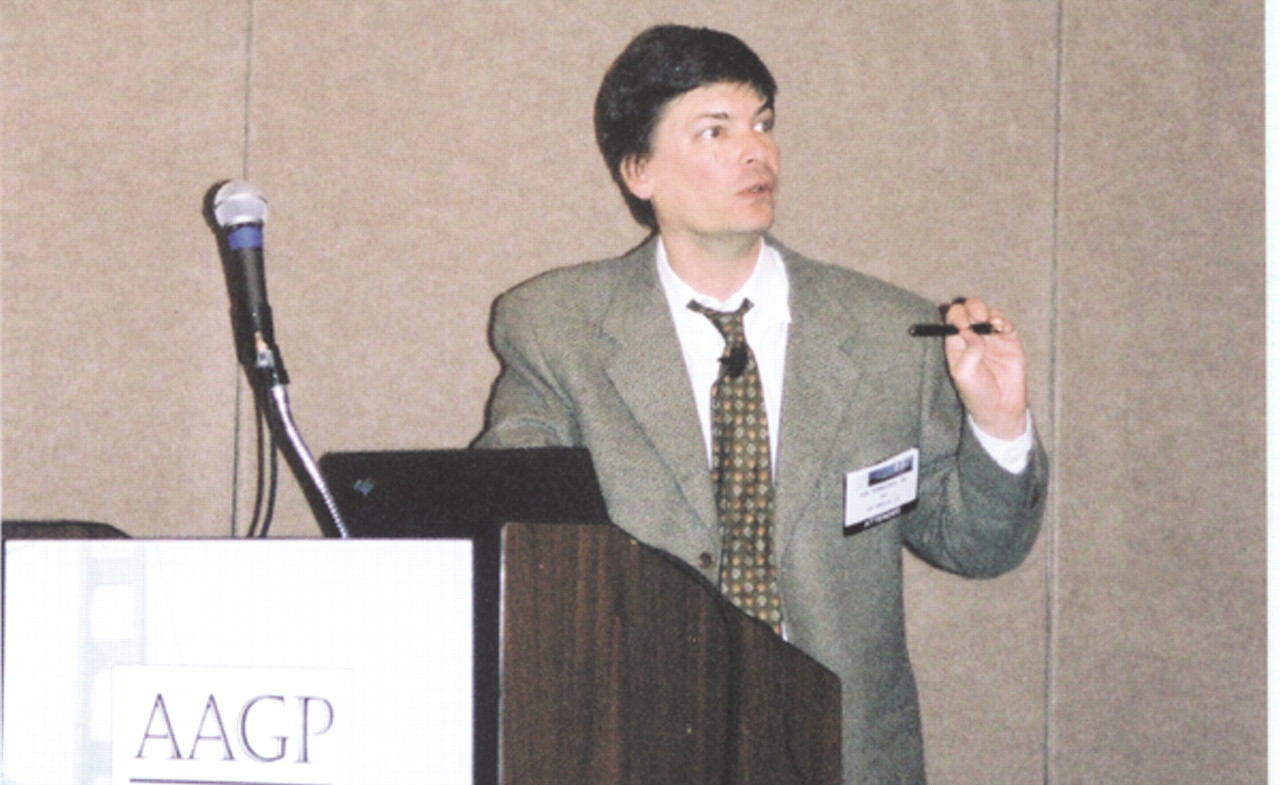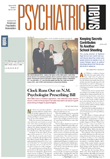Preliminary data suggest that a huge treatment gap exists in patients with Alzheimer’s disease, with as many as 65 percent of patients with the progressive and terminal disorder going undiagnosed and, therefore, untreated.
This startling finding was just one of many discussed and debated at the annual meeting of the American Association for Geriatric Psychiatry (AAGP) in San Francisco in February.
Several researchers and clinicians from various disciplines noted, once again, that the majority of patients with AD are not being seen by specialists, but rather by primary care physicians who do not always recognize and treat the disease.
The significance of the problem was summed up by P. Murali Doraiswamy, M.D., director of clinical trials in the department of psychiatry and behavioral sciences at Duke University.
Doraiswamy noted that underrecognition of AD is compounded by misconceptions about available treatment. Many physicians, he explained, see the progressive course of the disease as unrelenting and see no value to treatment.
Geriatric psychiatry specialists “haven’t yet convinced primary care physicians of the value of treatment for dementia and cognitive disorders associated with AD,” Doraiswamy said. “They thus have no real impetus to diagnose the disorder. The result is a large number of last-minute diagnoses that even a grocery store clerk could have made.”
According to Doraiswamy, research indicates that as many as two-thirds of all cases of dementia in the community are not recognized or evaluated. The average primary care practice in the U.S. today may have as many as 125 patients with AD, three quarters of whom, he said, have little or no documentation of an Alzheimer’s diagnosis.
Studies have estimated that in addition to the 2.25 million Americans currently diagnosed with AD and the 3.5 million diagnosed with mild cognitive impairment—which most geriatric psychiatrists believe is a precursor for AD—there may be as many as 1.8 million unrecognized cases of AD in the U.S., Doraiswamy said.
Many physicians don’t believe that cholinesterase inhibitors, the only drugs approved by the FDA to treat AD, make a difference in the course of the disease, Doraiswamy said. They believe that patients will steadily decline with or without the medications.
“Primary care physicians in particular will look at a study that says that after six to 12 months on a cholinesterase inhibitor, cognitive function on average is no different from baseline values,” Doraiswamy told Psychiatric News. “They interpret that finding as meaning that the drug had no benefit for the patient. What they do not understand is that the value of the medication lies in the fact that without that six to 12 months of cholinesterase inhibitor therapy, the cognitive function of the patient would be significantly worse.”
Cholinesterase inhibitors (ChEIs) have only been available since the mid 1990s. That class of medications blocks the enzymatic breakdown of the neurotransmitter acetylcholine, however, through slightly different mechanisms for each of the drugs. The result of that action is a relative increase in available acetylcholine within the synapses of the brain neurons affected by AD. The increased availability of acetylcholine allows the neurons to function at a higher level for a longer period of time.
The first ChEI, tacrine hydrochloride (Cognex), was approved in September 1993, followed by what is now the most widely prescribed ChEI, donepezil hydrochloride (Aricept) in November 1996. More recently, rivastigmine tartrate (Exelon) gained approval in April 2000, and galantamine hydrobromide (Reminyl) was approved February 28 (
see story on page 43).
Several of the AAGP annual meeting presentations focused on the use of these medications as well as new and developing medications that could expand treatment options for AD.
Significant evidence now suggests, Doraiswamy said, that ChEIs may ease the loss of independence that patients feel, improve the patients’ ability to conduct activities of daily living, ease the burdens placed on the caregivers, control some troublesome behaviors in the patients, and double the time until an AD patient requires placement in a long-term-care facility.
“We know that patients on a cholinesterase inhibitor decline at a slower rate,” Doraiswamy concluded. “The goal of cholinesterase therapy is stabilization, if only for six months to a year; that is still a significant benefit.”
One of the most comprehensive reviews of the efficacy and safety of ChEI therapy was released in January by the National Institute for Clinical Excellence (NICE) in London. The “Guidance on the Use of Donepezil, Rivastigmine, and Galantamine for the Treatment of Alzheimer’s Disease” reviews the clinical need for the medications, evidence to support their use, and implications the medications have for the public health system as it is affected by patients with AD.
“The NICE guidance,” Lon S. Schneider, M.D., M.S., professor of psychiatry, neurology, and gerontology at the University of Southern California’s Keck School of Medicine, remarked, “is an excellent, comprehensive look at these medications and their usefulness in treating patients with Alzheimer’s disease.”
Schneider and Pierre N. Tariot, M.D., professor of psychiatry, medicine, and neurology at the University of Rochester School of Medicine, reviewed efficacy and safety data on cholinesterase therapy, using an evidence-based-medicine approach, during another AAGP session.
According to Schneider and Tariot, significant evidence does exist to show that each of the three newer ChEIs, donepezil, rivastigmine, and galantamine, slows the progression of symptoms in AD patients. However, few hard data have been collected to document the efficacy of the drugs beyond six months of treatment.
At six months, however, one significant difference does exist among the three: galantamine appears to be more effective, showing actual improvement in assessed cognitive function versus a stabilization or small decline for patients taking donepezil or rivastigmine.
In long-term trials of one year, the data are inconsistent, Schneider said.
He concluded that although good evidence exists for efficacy of ChEIs in treating AD in the short term, there is not yet an appropriate, adequate analysis of relative effectiveness among the ChEIs. Schneider said that safety of the medications should be further described and that a significant question remaining to be answered is, “Once we start patients on a cholinesterase inhibitor, how long do we keep them on the drug? We don’t really know the answer to that one.”
Kenneth L. Davis, M.D., professor and chair of the department of psychiatry and director of the Alzheimer’s Disease Research Center at Mount Sinai School of Medicine, described how he thinks Alzheimer’s disease will be treated 10 years from now.
“There are many therapeutic targets and strategies,” said Davis, “such as beta and gamma secretase inhibitors, antiaggregation inhibitors, anti-inflammatory agents, antioxidents, and cholinomimetics, but no intervention is likely to completely stop progression. Most patients will present with early memory problems indicative of lost cells that cannot be replaced.”
Multiple interventions will be the rule in each patient, Davis believes, with palliative therapies complementing antiprogression therapies.
The NICE “Guidance on the Use of Donepezil, Rivastigmine and Galantamine for the Treatment of Alzheimer’s Disease” is available on the Web at www.nice.org.uk; search on the word “Alzheimer’s” to locate all documents of relevance.
More information about AAGP and its annual meeting are available at www.aagponline.org. ▪

